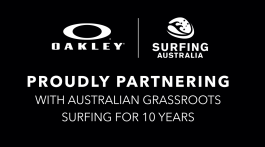Some basic discipline can keep you out of trouble
By Scott Jago – Allan Hall Business Advisors
In terms of cash flow peaks and troughs, the Christmas/summer trading period is a huge peak. Knowing what to focus on and how to best utilise this cash flow can mean the difference between getting ahead, or staying stuck behind. The approach we are going to suggest in this article if implemented is designed to get you ahead, and keep you there.
THINK IN TERMS OF GROSS PROFIT
One of the most common mistakes we see with retail clients is focusing solely on sales turnover instead of thinking in terms of gross profit when assessing comparative performance. An example of this is in sale periods where you might make $5,000 in a day but on a 10% margin, versus a normal trading day that brings $3,000 in turnover but with a 30% margin. You have actually made more money on the smaller turnover day, so focusing purely on sales as a target can be misleading. Establishing and maintaining margin levels is critical to the health of your business, and review of performance should always take this into account alongside turnover. Many point-of-sale systems can calculate margins for you at the end of each day.
Establishing and maintaining margin levels is critical to the health of your business, and review of performance should always take this into account alongside turnover.
SEPARATE YOUR BANK ACCOUNTS
Moving now to cash flow management, a great way to make sure that you have money when it is needed for BAS and creditor payments is to set up a separate bank account (separate to your trading account) into which you deposit the cost of goods sold for the week (straight off your point of sale system) out of takings, plus around 4 – 5% to cover Net GST payments. Some take this further and also move PAYG Withholding and superannuation guarantee levy amounts into this separate account as well. With the introduction of personal liability for directors extending to unreported PAYG withholding, and unpaid super guarantee levy, having this money set aside and ready to pay provides huge peace of mind. No one intentionally sets out to do poorly, however with many small businesses starting out and underestimating their capital requirements it makes sense to instil these types of practices as early as you can in the life of your business.
If you start this process now while in a stronger sales period over Christmas and summer you will have cash available to pay creditors on time, which includes suppliers and the ATO for your BAS.
TAKE ADVANTAGE OF EARLY SETTLEMENT DISCOUNTS
From here you may be able to then get yourself into a position where you can take advantage of early settlement discounts to support your sales margins. Too often we see retail clients using the GST and funds earmarked for creditors, and it becomes a vicious cycle to exit. We have noticed a marked difference in the ATO’s approach to outstanding debts and the switch has clearly been made from education to enforcement. So too suppliers are more savvy and possibly less tolerant of accounts that don’t pay, or communicate clearly regarding debts.
We have noticed a marked difference in the ATO’s approach to outstanding debts and the switch has clearly been made from education to enforcement.
CHOOSE THE RIGHT POINT OF SALE SYSTEM
On a final note retail clients should also invest time and research into selecting the POS system that best suits their business and also exploring the vast array of ‘add-ons’ or ‘plug ins’ that are available in today’s marketplace. There has never been a greater level of analytical information for retail business owners.
* Scott Jago is from Alan Hall Business advisers, a northern beaches, Sydney based accounting and business advisory firm with a strong retail client base including and number of surf and snow stores.






